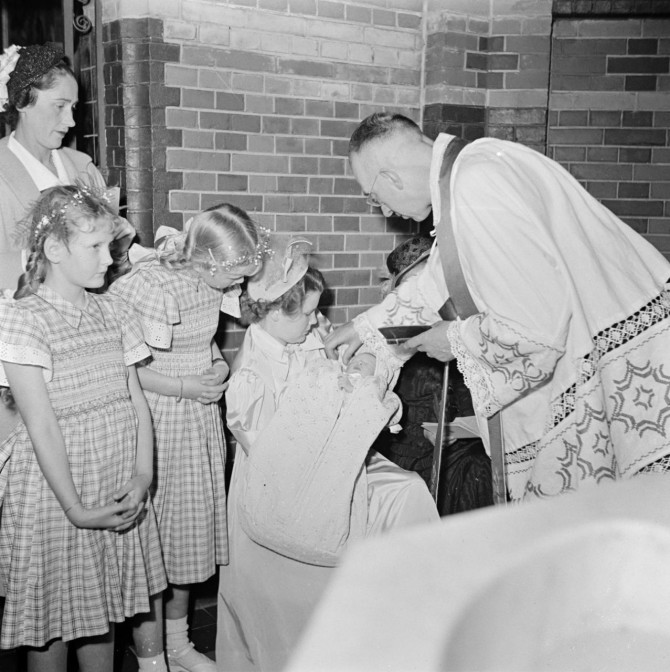Church records of baptisms, marriages, and burials are among the most popular genealogical sources to use. If you can’t find a record, how do you know if the records don’t exist anymore, or if you simply haven’t found the person?
In 1981, a book was published to help researchers, the Repertorium DTB. For each town, it lists the surviving records per denomination.
Where to find the overview of Dutch church records
The book is available online at the website of the Centraal Bureau voor Genealogie: Repertorium DTB (PDF, 12 MB).

Baptism of a child, 1956. Credits: Willem van de Poll, collection Nationaal Archief (CC-BY)
Using the Repertorium
Each entry contains the following information:
- Name of the town. Skipped if the same as the name of the municipality.
- Name of the municipality (in italics).
- Two-letter code for the province
- Code for the religion (e.g. ref = Dutch Reformed, RK = Roman Catholic, wal = Walloon, civ = civil, isr = Jewish, imp = tax)
- Period for which the records survive. 1700-1800 means the whole period survived, 1700..1800 means that fragments of this period survived.
- Place where the records were kept in 1981 (e.g. “ga” = gemeentearchief = municipal archives, “ra” = rijksarchief = provincial archives, “cb” = Centraal Bureau voor Genealogie = Central Bureau for Genealogy).
- Letter identifying the record type (G = births / baptisms, T = marriages, O = deaths / burials, L = members)
- Sometimes, referrals to other towns (“zie” = see).
Warnings
Two warnings about using this Repertorium:
- The places where these records are kept are out of date. Several records are now kept in a different repository than in the 1980s.
- In some cases, records have turned up since 1981. I do not know of any record losses since 1981. So if the Repertorium says that a record survives, that is probably correct, but if it is missing, it could have surfaced since then.

